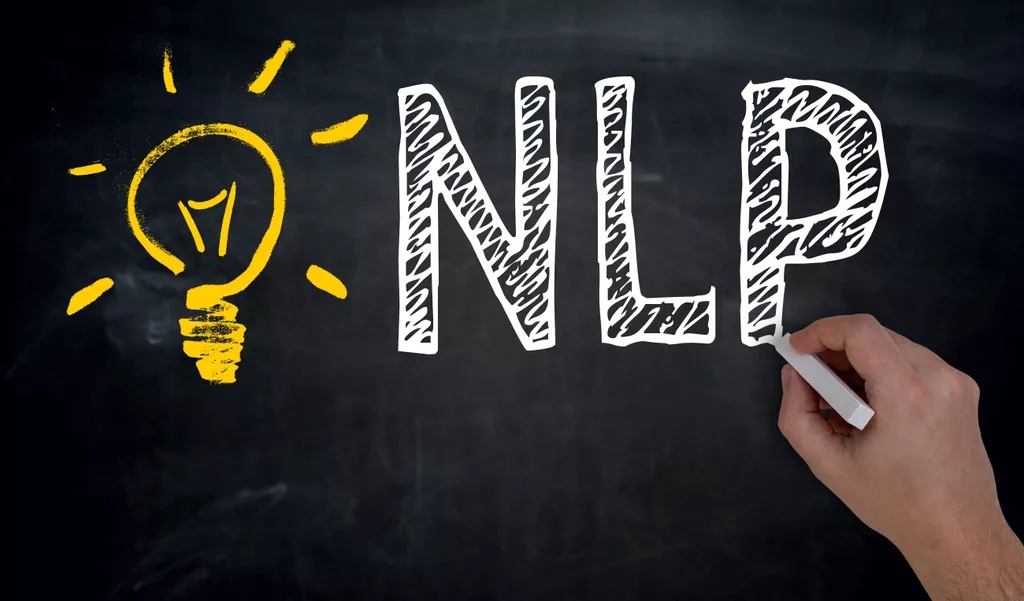It is primarily concerned with the literal meaning of words, phrases, and sentences. The goal of semantic analysis is to extract exact meaning, or dictionary meaning, from the text. To understand semantics in NLP, we first must understand the meaning of words in natural language. For example, there are hundreds of different synonyms for “store.” Someone going to the store might be similar to someone going to Walmart, going to the grocery store, or going to the library, among many others. In other words, they must understand the relationship between the words and their surroundings. Another important technique used in semantic processing is word sense disambiguation.
- Maps are essential to Uber’s cab services of destination search, routing, and prediction of the estimated arrival time (ETA).
- Spell check can be used to craft a better query or provide feedback to the searcher, but it is often unnecessary and should never stand alone.
- In cases such as this, a fixed relational model of data storage is clearly inadequate.
- Internal linking and content recommendation tools are one way in which NLP is now influencing SEO.
- There is a tremendous amount of information stored in free text files, such as patients’ medical records.
- We were not allowed to cherry-pick examples for our semantic patterns; they had to apply to every verb and every syntactic variation in all VerbNet classes.
However, in 16, the E variable in the initial has_information predicate shows that the Agent retains knowledge of the Topic even after it is transferred to the Recipient in e2. The next stage involved developing representations for classes that primarily dealt with states and processes. Because our representations for change events necessarily included state subevents and often included process subevents, we had already developed principles for how to represent states and processes. Other classes, such as Other Change of State-45.4, contain widely diverse member verbs (e.g., dry, gentrify, renew, whiten).
Semantics-Oriented Natural Language Processing
Several companies are using the sentiment analysis functionality to understand the voice of their customers, extract sentiments and emotions from text, and, in turn, derive actionable data from them. It helps capture the tone of customers when they post reviews and opinions on social media posts or company websites. These chatbots act as semantic analysis tools that are enabled with keyword recognition and conversational capabilities. These tools help resolve customer problems in minimal time, thereby increasing customer satisfaction.
Research Fellow (AI and Large Language Models) job with … – Times Higher Education
Research Fellow (AI and Large Language Models) job with ….
Posted: Mon, 05 Jun 2023 07:20:45 GMT [source]
Semantic tasks analyze the structure of sentences, word interactions, and related concepts, in an attempt to discover the meaning of words, as well as understand the topic of a text. In the past, search engines relied heavily on keyword matching to evaluate the relevance of a website for a specific query. However, with the aid of user intent understanding, metadialog.com search engines may now provide more relevant and accurate answers to a search query. NLP has several applications outside SEO, but one of the most important is its ability to assist search engines in better comprehending a user’s request and intent. The semantics of a programming language describes what syntactically valid programs mean, what they do.
Graph representations
Whether that movement toward one end of the recall-precision spectrum is valuable depends on the use case and the search technology. It isn’t a question of applying all normalization techniques but deciding which ones provide the best balance of precision and recall. NLU, on the other hand, aims to “understand” what a block of natural language is communicating.
- To summarize, natural language processing in combination with deep learning, is all about vectors that represent words, phrases, etc. and to some degree their meanings.
- Earlier approaches to natural language processing involved a more rules-based approach, where simpler machine learning algorithms were told what words and phrases to look for in text and given specific responses when those phrases appeared.
- It saves a lot of time for the users as they can simply click on one of the search queries provided by the engine and get the desired result.
- Besides, Semantics Analysis is also widely employed to facilitate the processes of automated answering systems such as chatbots – that answer user queries without any human interventions.
- However, you can perform high-level tokenization for more complex structures, like words that often go together, otherwise known as collocations (e.g., New York).
- Cdiscount, an online retailer of goods and services, uses semantic analysis to analyze and understand online customer reviews.
We explore how to represent the meaning of words, phrases, sentences and discourse. Earlier approaches to natural language processing involved a more rules-based approach, where simpler machine learning algorithms were told what words and phrases to look for in text and given specific responses when those phrases appeared. But deep learning is a more flexible, intuitive approach in which algorithms learn to identify speakers’ intent from many examples — almost like how a child would learn human language. In this context, word embeddings can be understood as semantic representations of a given word or term in a given textual corpus. Semantic spaces are the geometric structures within which these problems can be efficiently solved for. As such, much of the research and development in NLP in the last two
decades has been in finding and optimizing solutions to this problem, to
feature selection in NLP effectively.
Natural Language Processing and Computational Linguistics 2: Semantics, Discourse and Applications
Natural language processing plays a vital part in technology and the way humans interact with it. It is used in many real-world applications in both the business and consumer spheres, including chatbots, cybersecurity, search engines and big data analytics. Though not without its challenges, NLP is expected to continue to be an important part of both industry and everyday life. One critical challenge with the above semantic representations is that they are developed by linguists on domain specific corpa and they can be complex and hard to understand. It can be considered the study of language at the word level, and some applied linguists may even bring in the study of the sentence level. Semantics is the study of meaning, but it’s also the study of how words connect to other aspects of language.
What are the 3 kinds of semantics?
- Formal semantics.
- Lexical semantics.
- Conceptual semantics.
The main difference between them is that in polysemy, the meanings of the words are related but in homonymy, the meanings of the words are not related. For example, if we talk about the same word “Bank”, we can write the meaning ‘a financial institution’ or ‘a river bank’. In that case it would be the example of homonym because the meanings are unrelated to each other. Maps are essential to Uber’s cab services of destination search, routing, and prediction of the estimated arrival time (ETA).
Entity Extraction
Text classification is a core NLP task that assigns predefined categories (tags) to a text, based on its content. It’s great for organizing qualitative feedback (product reviews, social media conversations, surveys, etc.) into appropriate subjects or department categories. There are many challenges in Natural language processing but one of the main reasons NLP is difficult is simply because human language is ambiguous.
It has a variety of real-world applications in a number of fields, including medical research, search engines and business intelligence. Question answering is an NLU task that is increasingly implemented into search, especially search engines that expect natural language searches. Tasks like sentiment analysis can be useful in some contexts, but search isn’t one of them. While NLP is all about processing text and natural language, NLU is about understanding that text. An error analysis of the results indicated that world knowledge and common sense reasoning were the main sources of error, where Lexis failed to predict entity state changes.
Computational Semantics for Natural Language Processing
The relational branch, in particular, provides a structure for linking entities via adjectives that denote relationships. The arguments of each predicate are represented using the thematic roles for the class. These roles provide the link between the syntax and the semantic representation. Each participant mentioned in the syntax, as well as necessary but unmentioned participants, are accounted for in the semantics. For example, the second component of the first has_location semantic predicate above includes an unidentified Initial_Location.
Finally, you’ll see for yourself just how easy it is to get started with code-free natural language processing tools. Semantic search is a form of search that considers the meaning of a user’s query rather than just the keywords. Natural language processing (NLP) makes it possible for semantic search to exist. By recognizing the user’s objective, semantic search may provide more relevant and targeted results. Semantic Similarity, or Semantic Textual Similarity, is a task in the area of Natural Language Processing (NLP) that scores the relationship between texts or documents using a defined metric.
Comparing Hybrid, AutoML, and Deterministic Approaches for Text Classification: An In-depth Analysis
Natural language processing and powerful machine learning algorithms (often multiple used in collaboration) are improving, and bringing order to the chaos of human language, right down to concepts like sarcasm. We are also starting to see new trends in NLP, so we can expect NLP to revolutionize the way humans and technology collaborate in the near future and beyond. The objective of the course is to learn about various topics in computational semantics and its importance in natural language processing methodology and research. Exercises and the project will be key parts of the course so the students will be able to gain hands-on experience with state-of-the-art techniques in the field.
Understanding Natural Language Processing in Artificial Intelligence – CityLife
Understanding Natural Language Processing in Artificial Intelligence.
Posted: Fri, 26 May 2023 07:00:00 GMT [source]
The classes using the organizational role cluster of semantic predicates, showing the Classic VN vs. VN-GL representations. Although they are not situation predicates, subevent-subevent or subevent-modifying predicates may alter the Aktionsart of a subevent and are thus included at the end of this taxonomy. For example, the duration predicate (21) places bounds on a process or state, and the repeated_sequence(e1, e2, e3, …) can be considered to turn a sequence of subevents into a process, as seen in the Chit_chat-37.6, Pelt-17.2, and Talk-37.5 classes. Here, we showcase the finer points of how these different forms are applied across classes to convey aspectual nuance.
Elements of Semantic Analysis in NLP
This improved foundation in linguistics translates to better performance in key NLP applications for business. Our mission is to build AI with true language intelligence, and advancing semantic classification is fundamental to achieving that goal. Lexical semantics plays an important role in semantic analysis, allowing machines to understand relationships between lexical items like words, phrasal verbs, etc. Semantic analysis is the process of drawing meaning from text and it allows computers to understand and interpret sentences, paragraphs, or whole documents by analyzing their grammatical structure, and identifying relationships between individual words in a particular context. In this series we’ve covered some of the state of the art developments and trends in natural language processing beyond just embeddings. Future posts will cover related advancements and code samples of how to use these tools as the fields progress.
- In 2019, artificial intelligence company Open AI released GPT-2, a text-generation system that represented a groundbreaking achievement in AI and has taken the NLG field to a whole new level.
- In Sentiment analysis, our aim is to detect the emotions as positive, negative, or neutral in a text to denote urgency.
- Having proper Schema (structured data) implemented on your website can be critical to your position on the SERPs.
- This representation follows the GL model by breaking down the transition into a process and several states that trace the phases of the event.
- The similarity of documents in natural languages can be judged based on how similar the embeddings corresponding to their textual content are.
- Moreover, it is also helpful to customers as the technology enhances the overall customer experience at different levels.
In order to accommodate such inferences, the event itself needs to have substructure, a topic we now turn to in the next section. In the rest of this article, we review the relevant background on Generative Lexicon (GL) and VerbNet, and explain our method for using GL’s theory of subevent structure to improve VerbNet’s semantic representations. We show examples of the resulting representations and explain the expressiveness of their components. Finally, we describe some recent studies that made use of the new representations to accomplish tasks in the area of computational semantics. In machine translation done by deep learning algorithms, language is translated by starting with a sentence and generating vector representations that represent it.
For example, ‘Raspberry Pi’ can refer to a fruit, a single-board computer, or even a company (UK-based foundation). Hence, it is critical to identify which meaning suits the word depending on its usage. Semantic analysis tech is highly beneficial for the customer service department of any company.
What is semantics in NLP?
Semantic analysis analyzes the grammatical format of sentences, including the arrangement of words, phrases, and clauses, to determine relationships between independent terms in a specific context. This is a crucial task of natural language processing (NLP) systems.
For example, the word “Bat” is a homonymy word because bat can be an implement to hit a ball or bat is a nocturnal flying mammal also. With sentiment analysis, companies can gauge user intent, evaluate their experience, and accordingly plan on how to address their problems and execute advertising or marketing campaigns. In short, sentiment analysis can streamline and boost successful business strategies for enterprises.
Nearly all search engines tokenize text, but there are further steps an engine can take to normalize the tokens. The whole process of disambiguation and structuring within the Lettria platform has seen a major update with these latest adjective enhancements. By enriching our modeling of adjective meaning, the Lettria platform continues to push the boundaries of machine understanding of language.

What is syntax or semantics?
Syntax is one that defines the rules and regulations that helps to write any statement in a programming language. Semantics is one that refers to the meaning of the associated line of code in a programming language.

